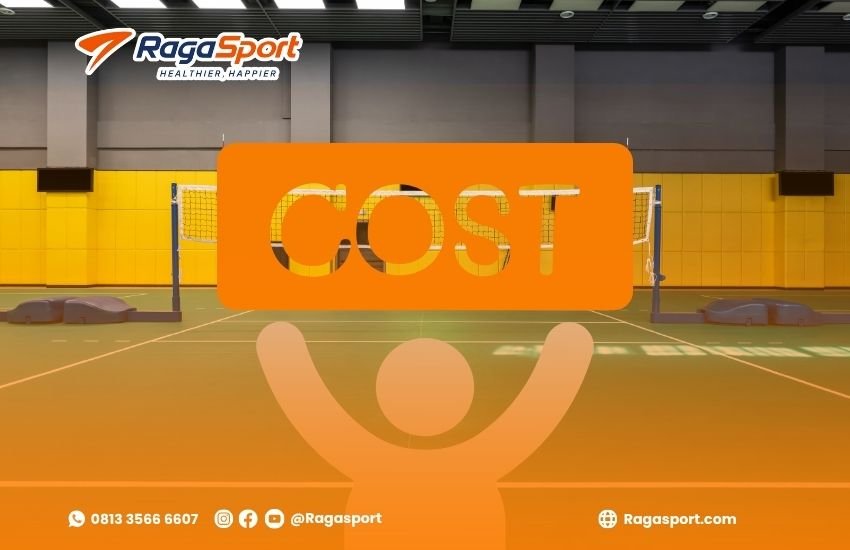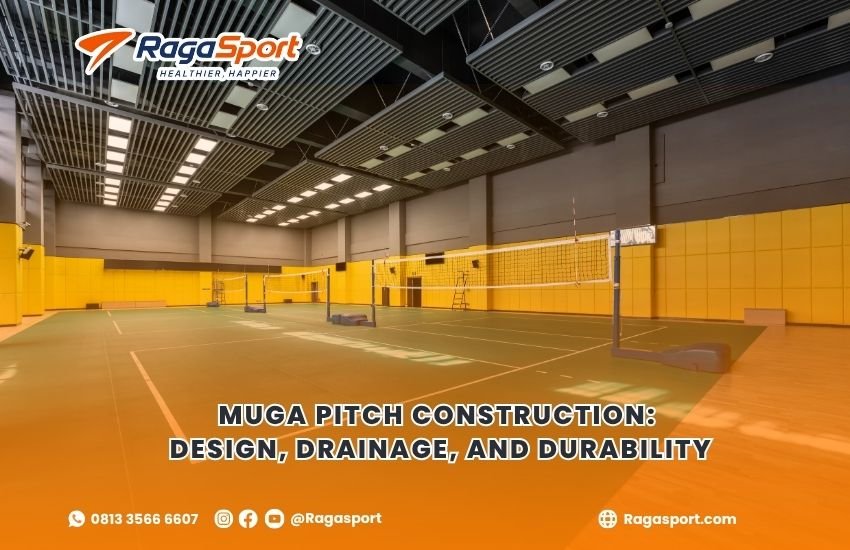MUGA Pitch Construction: Design, Drainage, and Durability
The Rise of MUGA Pitch Facilities
Multi Use Games Areas (MUGAs) have gained widespread popularity in recent years due to their versatility and space-saving benefits. Designed to accommodate various sports—such as futsal, basketball, tennis, volleyball, and even pickleball—MUGA pitches are ideal for schools, sports clubs, housing estates, and community centers.
The success of a MUGA project depends heavily on proper planning, efficient drainage, and the use of durable materials that meet long-term performance standards. In this guide, we’ll explore the three core pillars of MUGA pitch construction: design, drainage, and durability.
Table of Contents
1. Smart Design: Planning for Versatility and Performance
A well-designed MUGA pitch offers more than just a play area—it creates a safe, functional, and enjoyable sports environment. The design phase involves several key components:
1.1 Selecting Sports and Layout
Begin by identifying the primary and secondary sports that will be played on the pitch. This determines:
- Court dimensions
- Line markings
- Goalpost and net locations
- Surface traction and ball bounce requirements
A typical MUGA pitch can range from 18m x 30m to 40m x 60m, depending on the number of sports and users it must accommodate.
1.2 Surface Material Options
The surface must balance safety, durability, and playability across multiple sports. Common MUGA surface materials include:
- Polyurethane (PU): Ideal for high-impact sports like basketball and futsal. Offers excellent shock absorption.
- Acrylic: Suitable for tennis, netball, and light football.
- Synthetic turf: Provides a natural grass feel for football or hockey.
- EPDM rubber: Non-slip and soft, perfect for primary schools.
Each material has its own set of maintenance needs and lifespan expectations.
1.3 Safety Features
Incorporate side fencing to prevent ball loss and ensure safety, particularly for urban or school environments. Anti-slip coatings and proper lighting also enhance usability during evenings or in wet conditions.
2. Effective Drainage: Keeping the Pitch Playable Year-Round
No matter how advanced the surface is, poor drainage can render your MUGA pitch unusable. Accumulated water leads to surface damage, algae growth, and safety hazards. A well-executed drainage system ensures year-round performance, even in heavy rain.
2.1 Sub-Base Construction
The foundation of any pitch begins with a stable, well-compacted sub-base. Typically made of crushed stone or gravel, this layer allows water to move away from the surface quickly. It also prevents shifting or settling that can lead to cracks or uneven areas.
2.2 Slope and Gradient
A slight gradient (typically 1–2%) should be built into the surface to allow water to flow toward the drains. Flat surfaces trap water, especially with synthetic coatings, increasing the risk of damage.
2.3 Perimeter and Channel Drains
Install French drains or slot drainage channels around the edges of the pitch. Connect these to a soakaway system or local stormwater management system. Ensure that drains are protected from debris with filters or grates to prevent clogging.
2.4 Permeable Surfaces
Some MUGA designs incorporate porous layers that allow water to pass through the top surface. This reduces surface runoff and improves drying time after rain.
3. Durability: Building for Long-Term Performance
A MUGA pitch is a long-term investment, so durability must be considered from the beginning. From construction materials to aftercare, every component impacts the court’s lifespan.
3.1 Quality Construction Materials
Invest in UV-resistant coatings, reinforced fencing, and rustproof goalposts. Inferior materials may save cost up front but lead to frequent repairs and replacements.
3.2 Professional Installation
Poor workmanship is a leading cause of early wear and tear. Always work with experienced sport court contractors who understand the unique requirements of multi-use surfaces.
3.3 Maintenance Planning
Even durable courts need upkeep. Develop a maintenance schedule that includes:
- Weekly cleaning to remove dirt and debris
- Monthly inspections for signs of wear, drainage issues, or surface damage
- Repainting line markings every 2–3 years, depending on usage
3.4 Weather Resistance
In tropical or high-rainfall regions, like much of Indonesia, materials should be chosen specifically for moisture resistance, fast drying, and heat endurance.
4. Cost Considerations for MUGA Construction

Building a MUGA pitch involves multiple components that contribute to the total cost. Here’s a general overview of average prices in Indonesia (subject to site conditions and material choices):
| Component | Estimated Cost (IDR) |
|---|---|
| Ground preparation & sub-base | Rp100,000 – Rp200,000/m² |
| Surface installation | Rp250,000 – Rp600,000/m² |
| Line marking | Rp3,000,000 – Rp6,000,000 |
| Fencing and lighting | Rp50,000,000 – Rp150,000,000 |
| Total (per standard court) | Rp200,000,000 – Rp500,000,000 |
For commercial projects or community centers, the cost is offset by increased usage, potential rental revenue, and community engagement.
5. Choosing the Right Contractor
Working with the right contractor ensures that all technical aspects—design, drainage, and durability—are executed properly.
When selecting a sport court builder, look for:
- Proven experience in multi-sport construction
- Strong local references and completed projects
- Transparent cost estimates with detailed specifications
- Knowledge of sports safety standards and drainage regulations
The right team will guide you through design consultations, material selection, site inspections, and post-completion support.
6. Benefits of a Well-Built MUGA Pitch
A high-quality MUGA pitch delivers value far beyond its surface:
- Multi-sport flexibility: One facility supports a wide range of activities.
- Space efficiency: Ideal for areas with limited land availability.
- All-weather usage: With proper drainage and lighting, the pitch is always ready.
- Low maintenance: Durable materials require less frequent resurfacing.
- Community appeal: Encourages physical activity and social interaction.
Whether for schools, sports complexes, residential areas, or public parks, MUGAs are a future-ready solution for maximizing sport participation and facility value.

Ready to Build a Durable MUGA Pitch?
Let Raga Sport turn your vision into reality with expert construction, top-quality materials, and a field that meets every standard.
👉 Explore our projects at ragasport.com
📲 Chat with our team now via WhatsApp: Click Here

